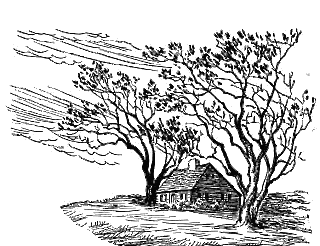Help your trees survive strong winds
 1. Choose slow-growing trees that are known for wind resistance and strong wood, rather than fast-growing varieties with weak wood.
1. Choose slow-growing trees that are known for wind resistance and strong wood, rather than fast-growing varieties with weak wood.2. Avoid trees with shallow rooting patterns if you live in an area of frequent high winds.
3. Trees that are planted so they become a small grove as they grow will have more wind resistance than a single specimen. However, do not overcrowd them.
4. Plant small trees close enough to your house to shade the east, west and south walls, and keep taller trees at a distance.
5. Do not add compost or rich soil to the hole where you plant a tree, or the tree's roots may not develop properly.
6. Prune trees to encourage strong growth and good form, starting a couple years after planting. Eliminate:
- branches that cross or rub
- branches with weak crotches (less than 45° between branch and trunk)
- branches that grow toward the center of the tree
- double leaders (more than one main stem)
- small branches that clutter the center of the tree
7. Help a young tree grow strong against the wind -- don't stake it tightly, and don't stake it longer than absolutely necessary.
8. Do not injure the trunks, branches, or roots of your trees.
9. Do not give your trees strong nitrogen fertilizer as this often promotes excessive leaf growth. The extra leaf surface can increase wind resistance, collect rain, and make the tree top heavy.
10. Remove mature trees that become hollow, diseased, weakened, one-sided or excessively leaning.

 "The power to recognize trees at a glance without examining their leaves or flowers or fruit as they are seen, for example, from the car-window during a railroad journey, can only be acquired by studying them as they grow under all possible conditions over wide areas of territory. Such an attainment may not have much practical value, but once acquired it gives to the possessor a good deal of pleasure which is denied to less fortunate travelers."
"The power to recognize trees at a glance without examining their leaves or flowers or fruit as they are seen, for example, from the car-window during a railroad journey, can only be acquired by studying them as they grow under all possible conditions over wide areas of territory. Such an attainment may not have much practical value, but once acquired it gives to the possessor a good deal of pleasure which is denied to less fortunate travelers."
0 comments -- please add yours:
Post a Comment